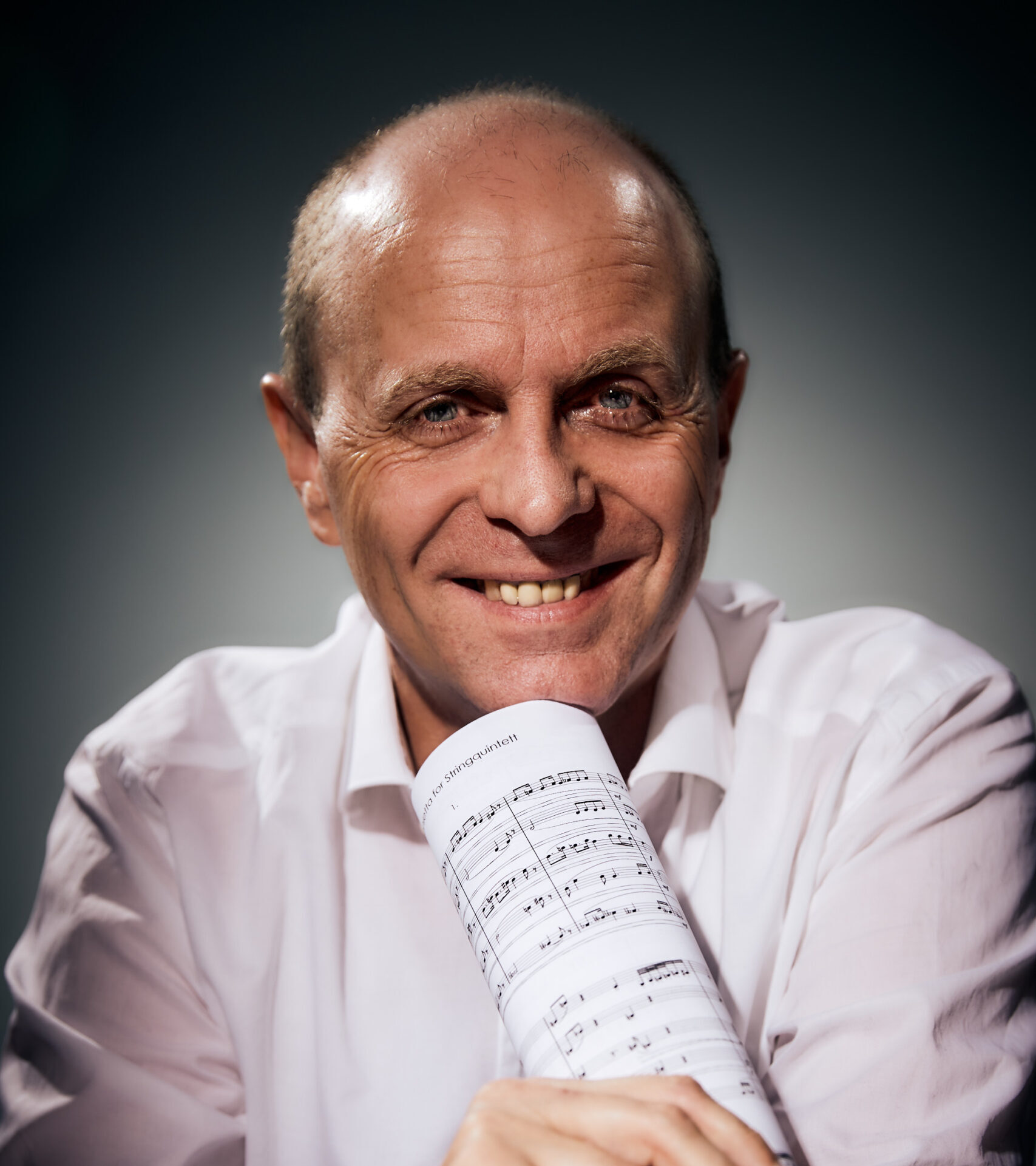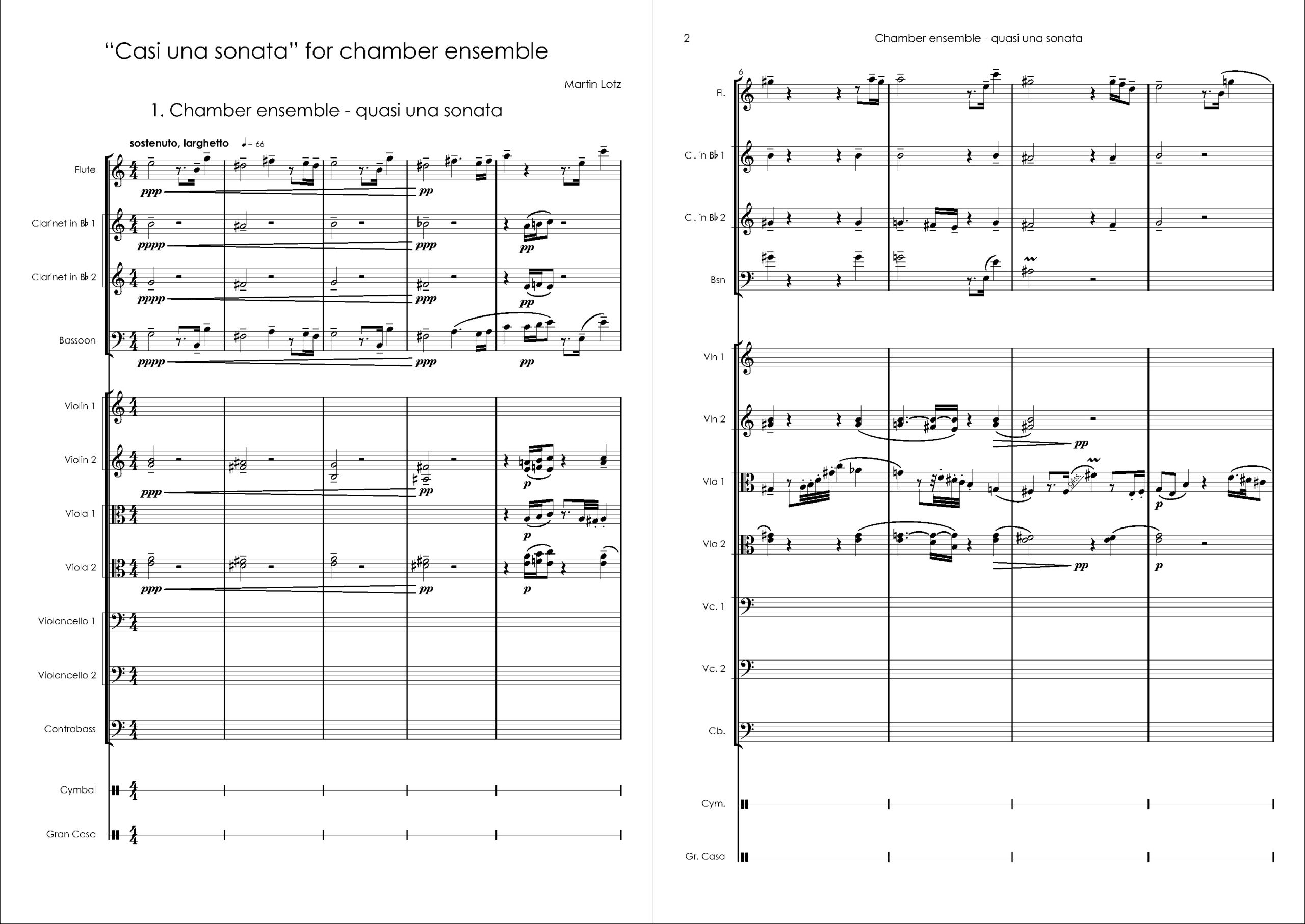News
New composition in 2023 – Piano Trio
Live performance of classic music composition “Sinfonietta for Stringquintett – Disput”
Op 7 – String Concerto for Cello and Violin
op 6 – update – Sinfoniette for string quintett – “Disput“
op 3 – “Quasi una sonata” for 12 player chamber ensembles
Classic music composition – About me and my work
New compositon: Piano trio
The work – created in 2023 – is a 13-minute composition for piano, violin and cello, beginning in A major. The work consists of three parts and begins with a piano intro, which is followed by a highly dynamic and strictly harmonic interplay of all three instruments. In part two, the cello initially dominates in A minor. Discreetly embedded disharmonies appear after a while, giving this part a more serious, unsettling character. Again, there is intense and dynamic interplay between all three instruments. Part three also begins with a very quiet and “floating” piano solo, at the end of which the violin and cello together take over the main voices in a positive mood. The piece ends with quiet and, in their way, “redemptive” chords. To gain expressiveness, the composition makes use of, among other things, augmented, shifted and raised chords or chromatic alternations. Harmony is of great importance, and the work exhibits a high harmonic density and dynamics. At the same time, the character of this – in contrast to the beat – is rather unstable, gliding, little consolidated, constantly in motion. More information and sheet music are available by request here.
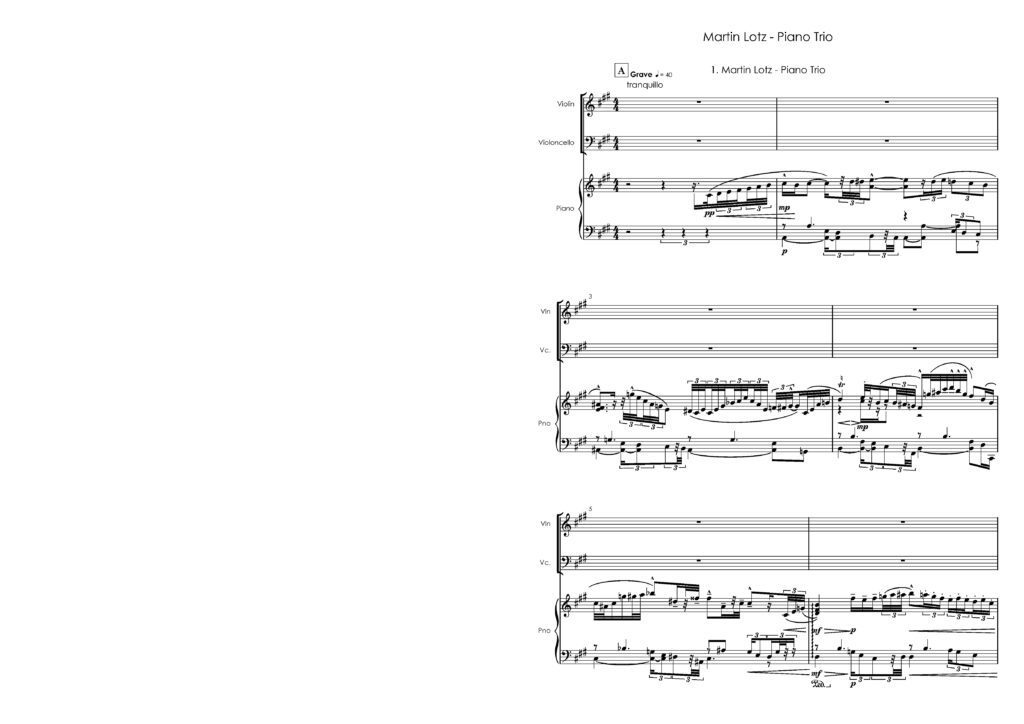

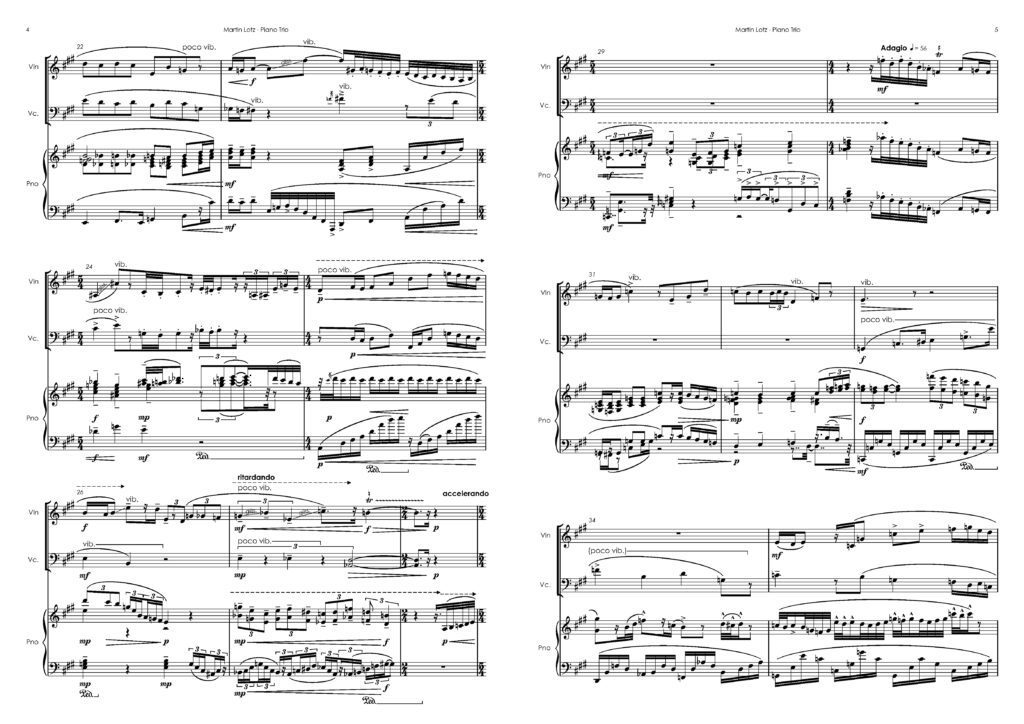
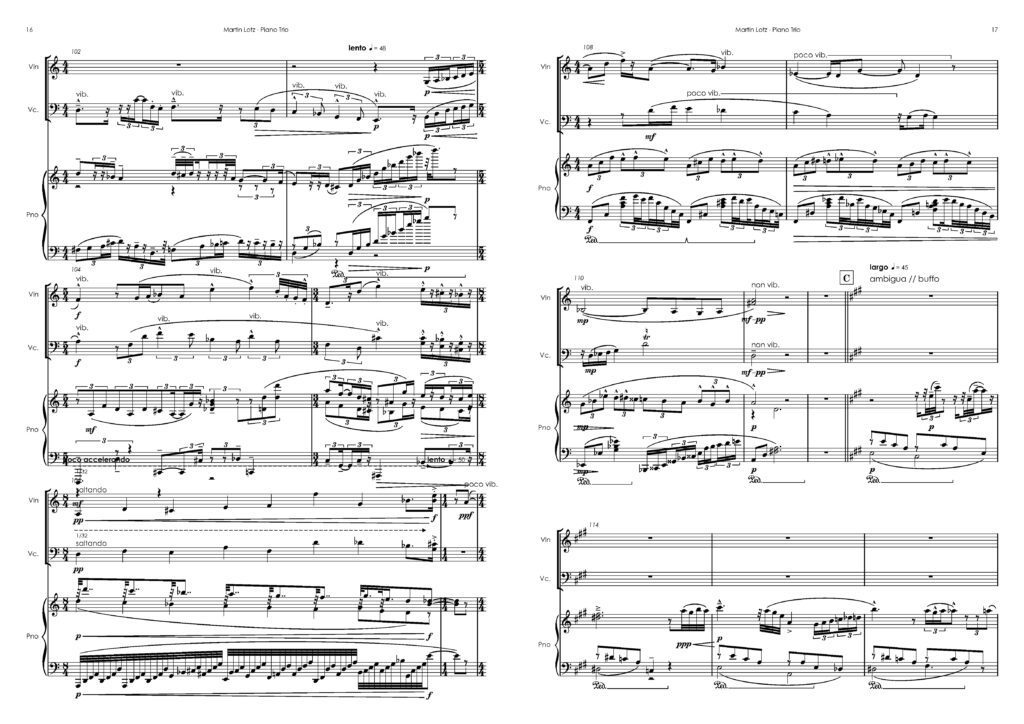
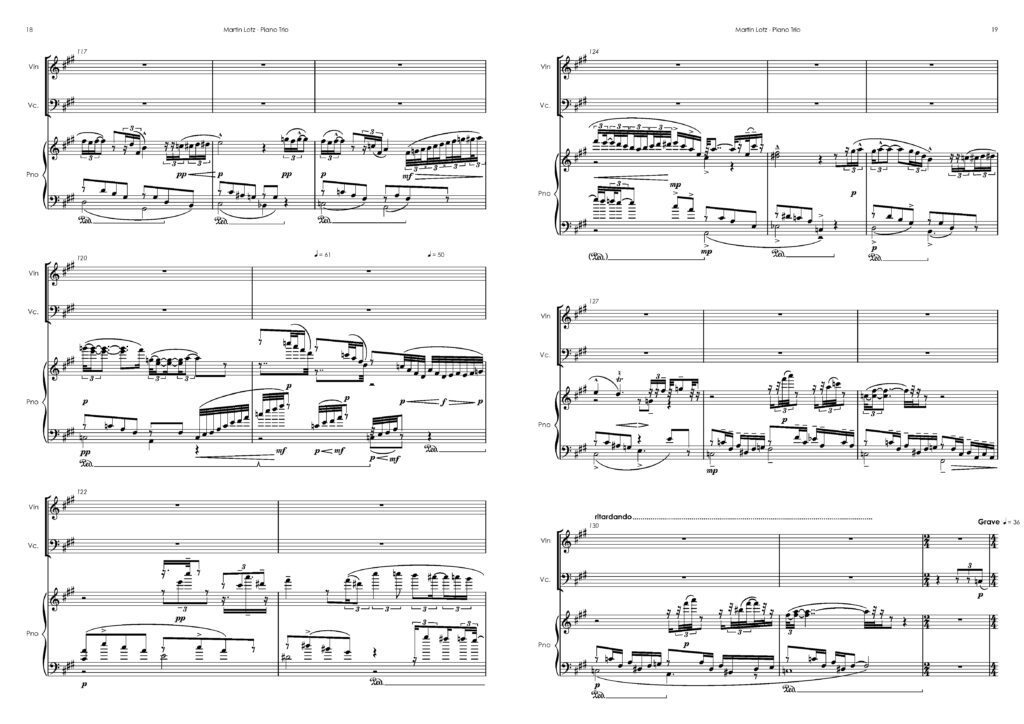
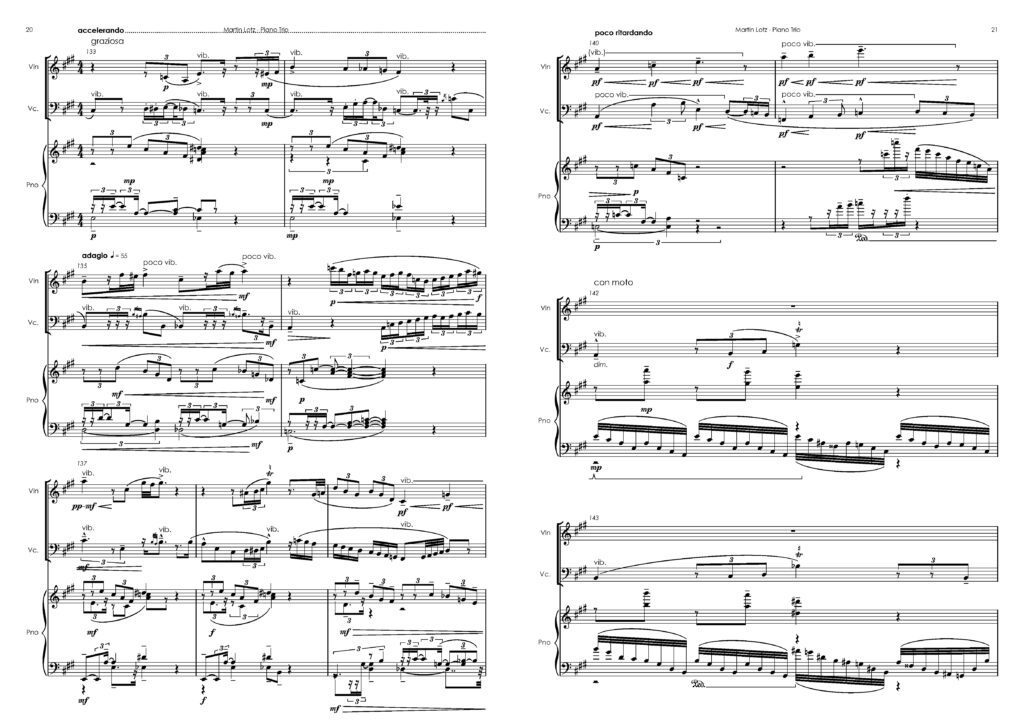
Performance of “Sinfonietta for Stringquintett – Disput”
I am happy to announce that my work “Sinfonietta for string quintet – Disput” was premiered at the festival “International Piano Competition & Festival MozArte 2022“ on September 09, 2022.
Many thanks to the organizers of the “International Piano Competition & Festival MozArte 2022” and to the “Festival Strings”, the players of the concert.
“Sinfonietta for string quintet – Disput”, September 9th 2022, Mozarte Festival 2022, Aachen:
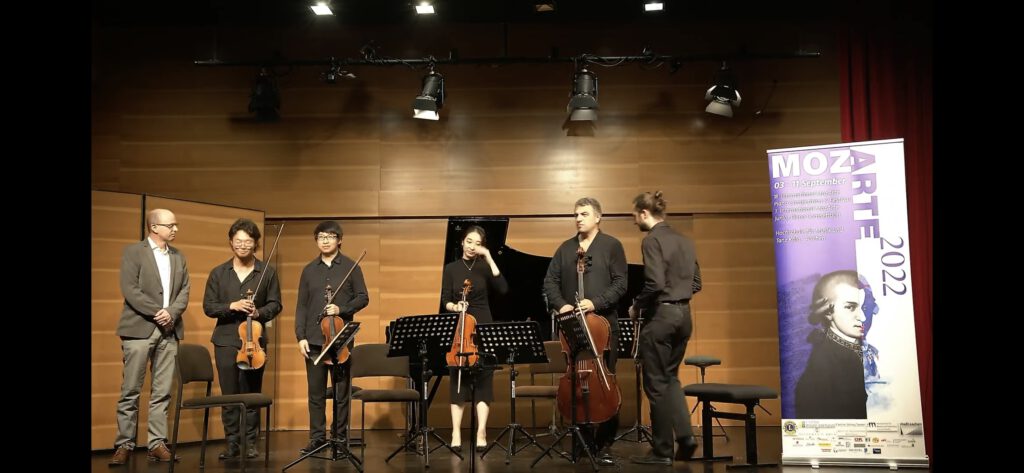
Visit the Mozarte 2022 homepage.
The piece “Sinfonietta for string quintet” with 2 violins, viola, cello and bass was written before the impression of two significant global crises. While there were at least signals of an end to one crisis in the spring of 2022, another was looming. The emotional reaction to this is expressed, among other things, by the division of the piece into two parts and the slow tempo between “grave” / “lento” and maximum “andantino”.
The work begins with an ascending slow chord progression in which dynamics gradually gain space and cello and violin enter soloistically. Harmonic focal points are found in the middle of the piece, where hope is initially expressed, but subsequently pessimism sets in, representing a strong harmonic break.
To gain expressiveness, the composition makes use of extended, shifted, and augmented chords, among other things, as well as chromatic alternations. Harmony is of great importance, and the work exhibits a high harmonic density. At the same time, the character of this – in contrast to the meter – is rather unstable, gliding, little consolidated, constantly in motion. New things happen frequently. Stability and continuity are expressed by the mostly used time signature 4/4, which is temporarily interrupted by 5/4 and 7/4 measures.
The piece ends with a ritardando finale that brings the solo players together and spreads a rather hopeful mood.
Op 7 – Concerto Élégiaque – String Concerto for Violin & Cello
The classic music composition “Concerto Élégiaque – String Concerto for Violin Cello” was written in the early summer of 2022 with the aim of creating an approximately 10-minute work for violin and cello and accompanying string orchestra.
The piece is a three-part, highly polyphonic work melodically based primarily on 2 themes. These are distributed roughly serially over sections 1 and 2, but are both repeated in a strongly modulated manner in section 3 (through transpositions, melodically and rhythmically sometimes strongly modified recurrences). Thereby the melodic density is relatively high in all 3 parts, but especially high in the second part.
Part 1 expresses the “light” and “positive” moods leggero, energico, soave as well as a clear major-minor tonality (and sometimes chords without thirds), while in the second part the rather “heavy” moods tranquillo, doloroso and serioso are used as well as frequently suspended, diminished or raised chords.
Part 3 is clearly characterized by the “buffo” tuning due to its very strong modulations. Here the dynamic range is also particularly high (pp – ff) and the generally quiet tempo of the work is at its highest (maximum larghetto). Likewise, in part 3 the standard 4/4 meter is most often replaced by 5/4 and 6/4 meters.
If interested, sheet music (score and all players) is available upon request here.
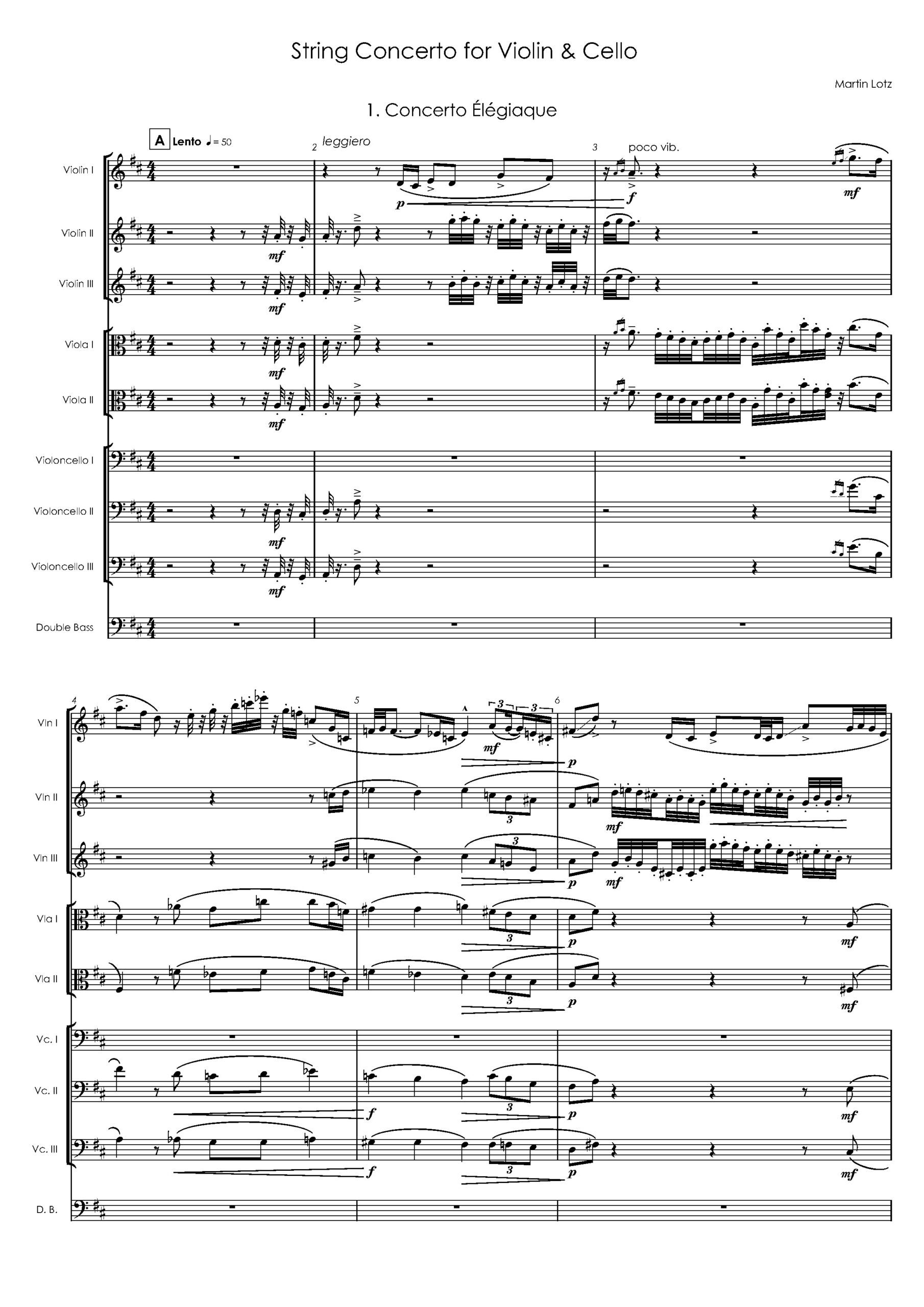
Op 6 – Classic music composition Sinfonietta for string quintett – Disput
The piece “Sinfonietta for string quintet”, a classic music composition with 2 violins, viola, cello and bass was written before the impression of two significant global crises. While there were at least signals of an end to one crisis in the spring of 2022, another was looming. The emotional reaction to this is expressed, among other things, by the division of the piece into two parts and the slow tempo between “grave” / “lento” and maximum “andantino”.
The work begins with an ascending slow chord progression in which dynamics gradually gain space and cello and violin enter soloistically. Harmonic focal points are found in the middle of the piece, where hope is initially expressed, but subsequently pessimism sets in, representing a strong harmonic break.
To gain expressiveness, the composition makes use of extended, shifted, and augmented chords, among other things, as well as chromatic alternations. Harmony is of great importance, and the work exhibits a high harmonic density. At the same time, the character of this – in contrast to the meter – is rather unstable, gliding, little consolidated, constantly in motion. New things happen frequently. Stability and continuity are expressed by the mostly used time signature 4/4, which is temporarily interrupted by 5/4 and 7/4 measures.
The piece ends with a ritardando finale that brings the solo players together and spreads a rather hopeful mood.
For more information and music sheet please contact me.
Op 3 – “Quasi una sonata” for 12 player chamber ensemble – classic music composition
The exclusive and complex composition offers a variety of tempos and moods, just as much dynamism and is inspired by composers of the late Romantic period such as Nikolai Miaskovsky, Felix Mendelssohn Bartholdy, Gustav Mahler and others. It also offers the balanced sound of a classical orchestra, reduced to a 12-16 player chamber orchestra.
The first two phases are played gently up to forte. In the third phase, the mood con anima, tempo andante dominates with string staccatos, underlaid with a cello solo. This is followed by a solo phase for violine and cello with flute. Towards the end of the work, there follows a cheerful phase leggerio in andante tempo. The solo flute introduces the phase, followed by legato strings and a staccato-backed violin solo. Towards the end the dynamics of the orchestra increase on forte. The last part of the piece is a calm, decaying phase in tranquillo, tempo larghetto.
The orchestral score for the piece is available here.
Ensemble, Auditory impression and scores
- Flute
- Clarinets 1 + 2
- Bassoon
- Violins 1 + 2
- Violas 1 + 2
- Violoncellos 1 + 2
- Contrabass
- Gran Casa & Cymbal
Duration: 12:30 min.
